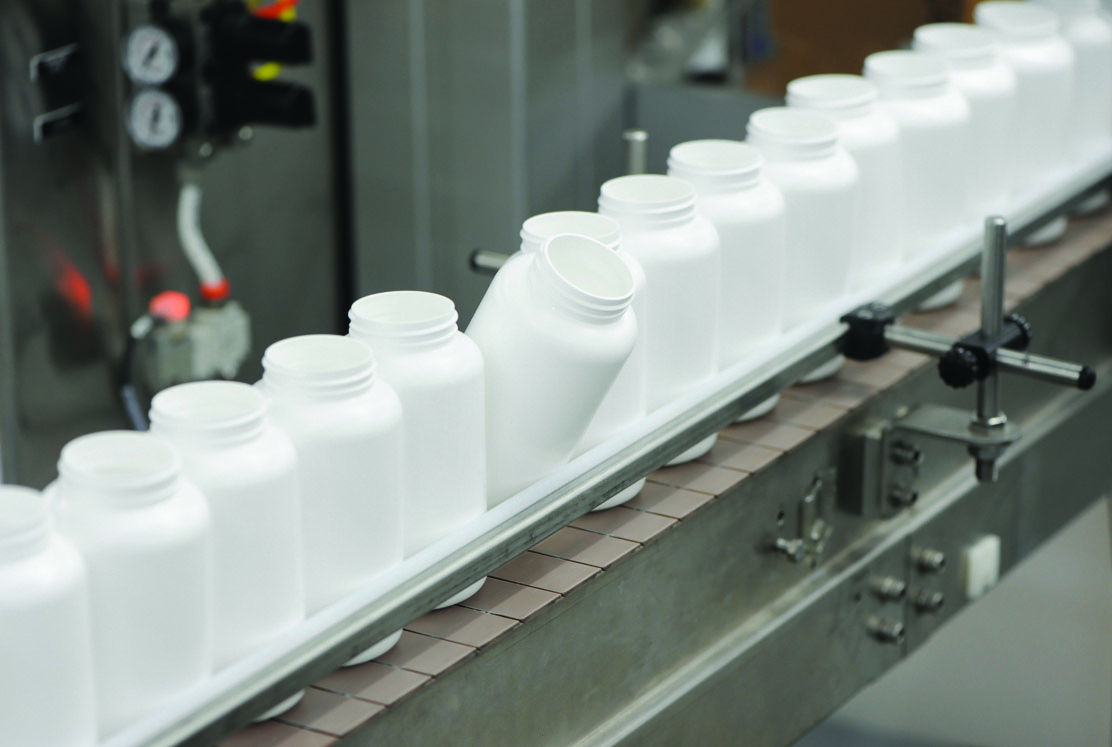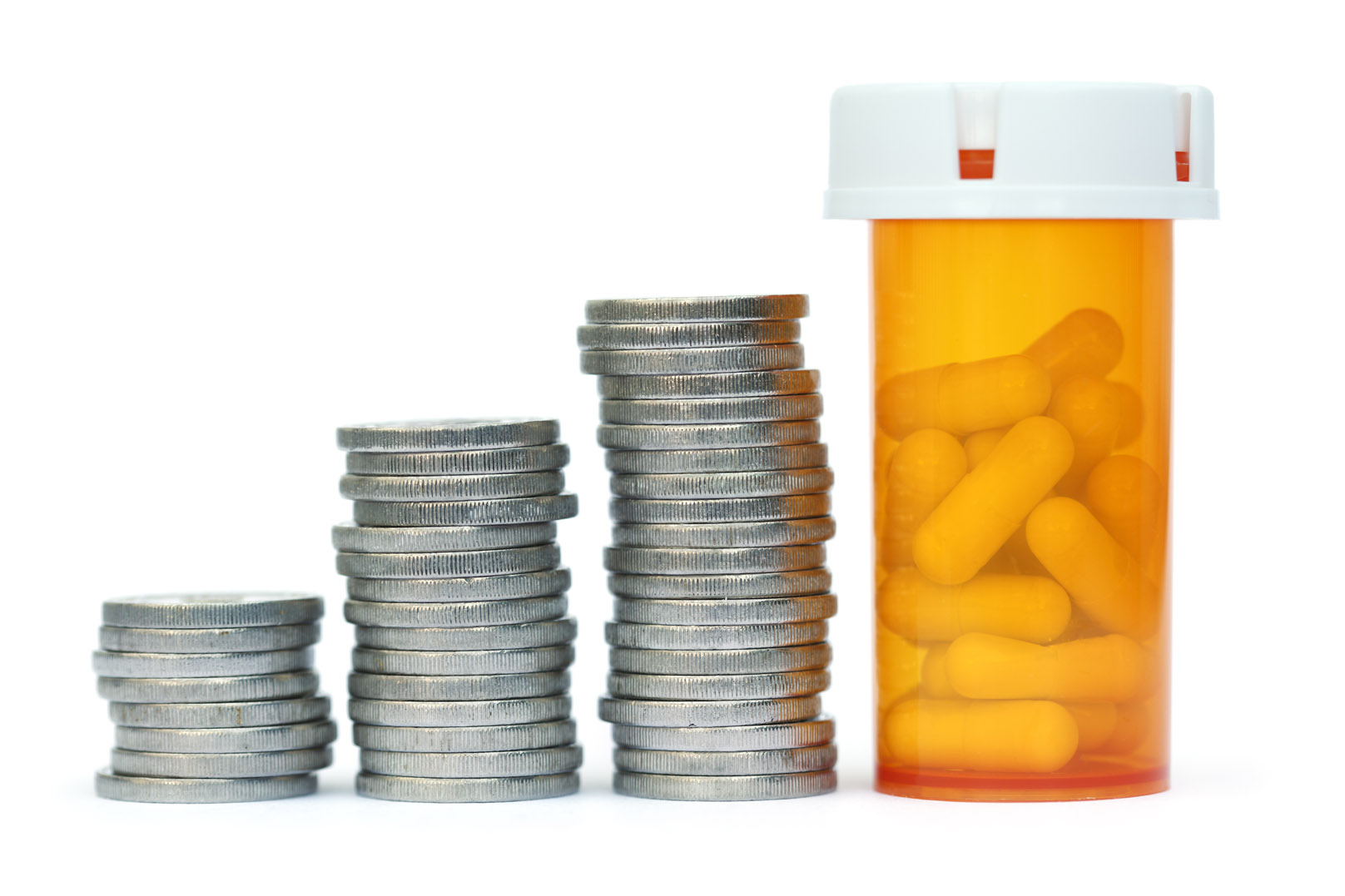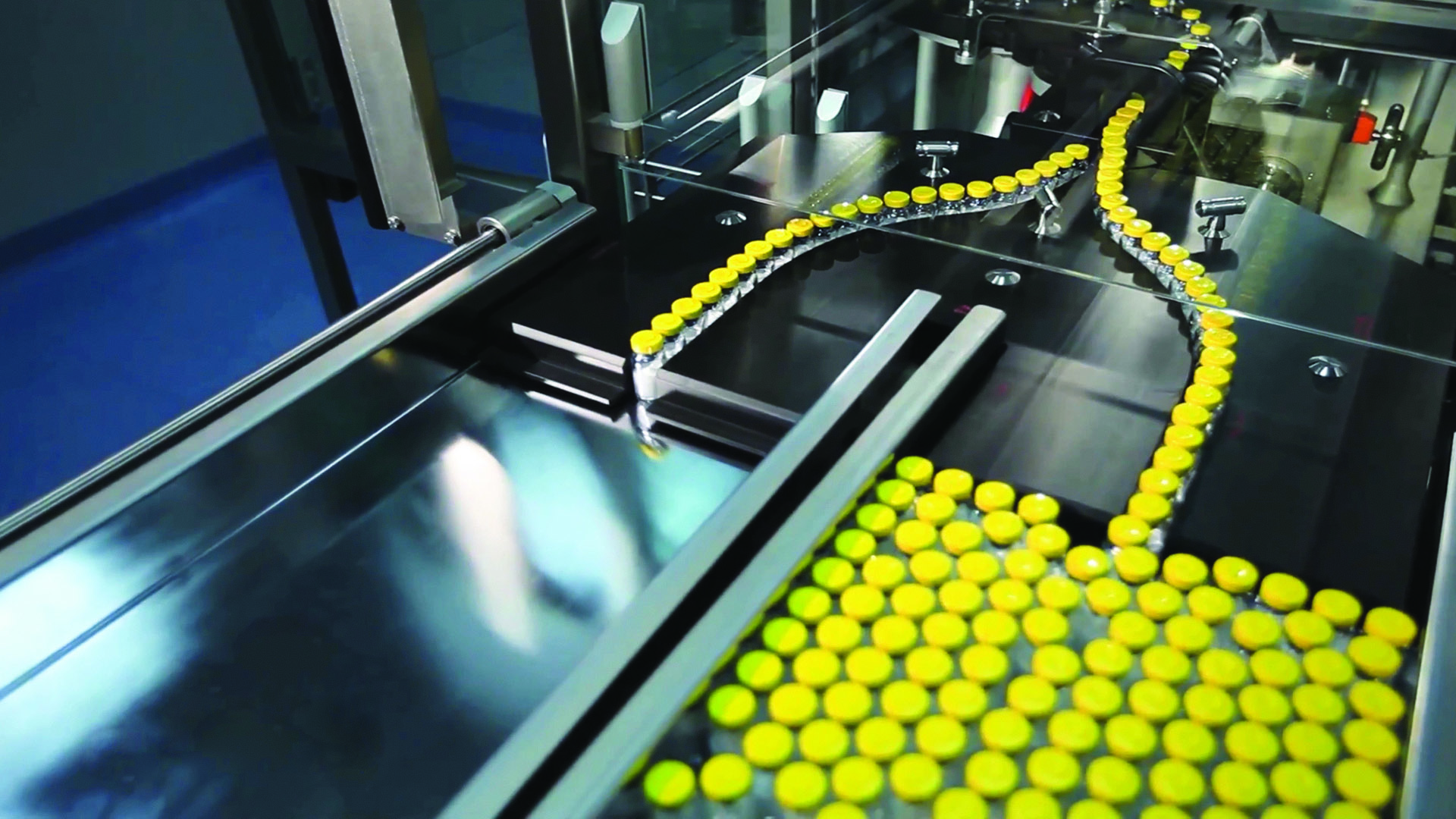The cost of pharmaceuticals for consumers in Australia used to be the envy of the world. What happened?
“Lazy”, “misleading” and “simplistic”: these were the words used by pharmaceutical lobby groups to describe the Grattan Institute’s March report on drug pricing in Australia.
The report argued drug prices here were “unacceptably high” at 3.7 times the best international prices, and that the nation could save $500 million a year by removing policy loopholes and price matching with other countries.
In the 2014-15 financial year, patented drugs comprised 58% of PBS spending with generic drugs accounting for the remaining 42%.
The budget burden of both drug categories could be lowered if Australia overhauled its pricing mechanisms, the report said.
The findings were met by howls of outrage from the pharmaceutical industry. Medicines Australia, the Generic and Biosimilar Medicines Association, the National Pharmaceutical Services Association and CSO Wholesalers each issued scathing commentaries on the report.
But lead author Professor Stephen Duckett says those criticisms are absurd and that drug companies can afford to take a price cut.
“The criticisms that drug companies won’t supply [at lower prices] is refuted by the very fact that they do supply in England or New Zealand,” Professor Duckett said.
So, why does Australia pay more than other countries? And how can we get a fairer price?
The history
At the turn of the last millennium, Australia paid some of the cheapest prices for medicines in the world. A 2001 Productivity Commission report found prices of generics and “me too” patented drugs in Australia were much lower than those in the US, Canada and the UK, and closer to those in New Zealand. Prices for new innovative pharmaceuticals in Australia were closer to those in the other countries. But overall, European prices were about 25% to 45% higher than Australia’s around this time.
By 2015, the situation had somewhat reversed. The Productivity Commission in that year reported Australian taxpayers were paying several times more for PBS medicines than other countries.
“Various explanations have been put forward, including slow price disclosure processes (see below) and Australia’s approach to negotiating prices with medicine manufacturers,” the report said.
The report cited a 2013 study by Professor Duckett, which claimed Australia was paying at least $1.3 billion per year too much for patented and generic medicines. The Productivity Commission also drew on research by Dr Sarah Mansfield, now a senior lecturer in academic general practice at Deakin University.
“My studies primarily focused on a comparison between generic drugs in Australian and England, as they also use price disclosure there,” Dr Mansfield told The Medical Republic.
“The conclusion was that we do indeed pay a lot more for generic medicines than England.”
Dr Mansfield’s 2014 study suggested Australia paid seven times more for generics than in the UK. A research paper by Professor Phillip Clarke, from the University of Melbourne, was even more damning, saying Australian generics prices were 10 times higher than in Britain.
Closer to home, Australian drug prices were estimated to be between six and 16 times New Zealand’s prices in 2013. Between 1993 and 2006, New Zealand’s drug costs rose 11% compared with 212% for Australia.
Even some Australian hospitals, which negotiate prices with the manufacturer directly, got a better deal than the government, Professor Duckett said. For example, in 2013, the PBS paid 64 times more for olanzapine than hospitals in Western Australia.
All this would seemingly cast doubt on claims made by pharmaceutical lobbies, such as Medicines Australia, which says the PBS is “the envy of the world” and offers “tremendous value to taxpayers”. And by the Generic and Biosimilar Medicines Association, which asserts that Australia “currently pays some of the lowest prices in the world for medicines”.
The reason Australia is succeeding in putting downwards pressure on prices, these groups claim, is because our “price disclosure” mechanism has been so successful. Under this policy, the government forces manufacturers to disclose the changes to the wholesale price of generic drugs sold to pharmacies. The government then drops the amount it pays to manufacturers to match the discounted rates paid by pharmacies.
The policy has created price reductions of more than 80% for some medicines and will deliver several billion dollars in savings in the coming years, Medicines Australia says.
Meanwhile, the generics lobby group estimates the total savings through price cuts will break $21 billion in total by the end of 2020. “To put this in context, the PBS costs around $10 billion a year,” Belinda Wood, the association’s CEO said.

Policy pressures
Australia has three main methods for controlling the price of drugs on the PBS: price disclosure, statutory price reductions and the therapeutic group premium policy.
According to Professor Duckett, and other independent experts, each of these mechanisms is either incomplete or broken. “[Price disclosure] has worked, but too slowly. The price of generic drugs in Australia has fallen substantially, but it has taken many years,” he said.
The policy was relatively weak when the then health minister, Tony Abbott, introduced it a decade ago. At first, it was voluntary for generics manufacturers to supply information about sales revenue. As a result, only four drugs fell in price when the initial round of price reductions occurred in 2009.
The following Labor government accelerated the price disclosure process in 2010, but there is still an 18-month delay from the start of the data collection period before the government adjusts its price. Price reductions do not happen fast or frequently enough, and Australian taxpayers are footing the bill, analysts argue.
If a company is giving a discount to another country the government should say we want the
same discount to apply to us.
By comparison, price disclosure in the UK happens immediately and prices are updated quarterly instead of three times a year, as is the case in Australia.
“Savings for governments from generic entry are greatest immediately following patent expiry of the originator,” said Dr Manfield.
“Over time … fewer generic suppliers enter the market (and some exit) and new therapies may displace old ones; thus this 18-month period is potentially a lost savings opportunity,”
The Productivity Commission also reported loopholes in the price disclosure system. For example, prices are not reduced if the potential price reduction is less than 10%. Also, the first month of data is excluded even though this is the “specials” period where drugs are sold at a further discounted price.
But Professor Duckett is not in favour of ditching price disclosure, despite its failings. The system isn’t perfect, but it is bringing prices down.
He suggests supplementing price disclosure with a new policy, where Australian prices are benchmarked against international prices.
“If a company is giving a discount to another country the government should say we want the same discount to apply to us,” he said.
But the generics association argues that comparing Australia with other countries is fundamentally flawed.
“If you look at any other consumable, whether it’s a car or an iPhone or a pair of jeans, different markets pay different amounts for different things,” Ms Wood said.
Generics prices were already too low for some drugs, she said. The government actually increased the price of amoxicillin suspension last year from 55c in August to $1.28 in December.
“The government recognised that the ongoing supply … was under threat because prices were just so low that they were considered commercially unviable,” Ms Wood said.
The second strategy to control generic drug costs is statutory price reductions, which have been in place in Australia since 2005. Under this policy, the price of a drug is reduced by 16% once the drugs go off patent.
However, other countries slash the price much further. The Netherlands, for instance, halves the price of medicines when patents expire, and Canada decreases prices by 82% for some products.
As The Medical Republic went to press, media reports were suggesting the government was planning to announce a lift in the price cuts to 25% in the upcoming budget.
Both statutory price reduction and price disclosure affect only generic brands of drugs. The price of new, on-patent drugs is negotiated under separate pricing mechanisms.
“The government is a fairly hard-nosed bargainer because it is the only buyer,” said Dr Kim Sweeny, principal projects officer and strategic analyst at Victoria University.
“The government has a lot of power in that situation. In the end, the companies have to accept what the government offers them or not be listed on the PBS.”
But this hasn’t stopped pharmaceutical companies from trying to influence the negotiation process. The most egregious example of this was the watering down of the therapeutic group premium policy to prevent overpricing of “me too” drugs.
Introduced in 1998, the Therapeutic Group Premium Policy applies within narrowly defined therapeutic sub-groups where the drugs concerned are of similar safety and health outcomes. The Australian government, through the PBS, subsidises up to the price of the lowest-priced drug in the group. Any extra cost for a particular drug is passed on to the patient by the manufacturer as a premium.
Not only were lobby groups involved in creating the policy, they also gamed the system by overseeing data collection, Professor Duckett said.
But the policy did not have the intended effect, said Professor Duckett, because it applied only to patented drugs – listed as “F1 drugs” on the PBS – and did not include generics, or F2 drugs.
“Perversely, it is drugs that have been through price disclosure cuts that are left out of the groups – drugs that are likely to be the cheapest option,” he said.
Pharmaceutical lobby groups had poked so many holes in the system that the policy currently applied only to two drugs: eprosartan and olmesartan, he said.
The Grattan Institute calculated that Australia could save more than $440 million a year if the therapeutic group premium policy included drugs subject to price disclosure and increased the number of groups from seven to 18.
Other countries have also broadened their policy: for example, Germany has 30 therapeutic groups.
A revamped policy would also combat “evergreening”, where brand-name companies patent “new inventions” that are really just slight modifications of old drugs, thereby keeping the price of a drug high, Professor Duckett said.
Professor Jon Karnon, health economist at the University of Adelaide, presented a few additional ideas for cost minimisation in a recent research paper.1
One strategy could be to update the indications of expensive drugs so they were available only to patients with adverse reactions to cheaper, equally effective versions, he said.
Alternatively, doctors could be nudged towards prescribing more cost-effective drugs through the Department of Health’s Quality Use of Medicines.
“Rational, fully informed clinicians, whose treatment decisions reflect societal perspectives and opportunity costs, may refrain from prescribing higher-priced equally effective pharmaceuticals,” the paper said.
Government initiatives to change prescribing habits might act as an antidote to pharmaceutical marketing, which tends to push the newest, most-profitable drugs, said Professor Karnon.
In a research paper yet to be published, Professor Karnon’s team proposes a more unusual solution – comparing the prices of new drugs with the opportunity cost of spending that money elsewhere in the health system. The goverment could then use that analysis to determine what price it was willing to pay for a new drug. “We are talking maybe a 25% reduction in the prices,” Professor Karnon said. “[Even with that price cut] there is still a lot of profit margin for the drug companies.”
The UK had moved towards this kind of value-based pricing, he said. “[But] what this really needs is international collaboration between governments. If we all say we are not going to pay the exorbitant prices, then the drug companies will have to lower prices because they won’t be able to sell the drugs.”
However, free-trade agreements were a barrier to this kind of action, Professor Karnon said.
“The problem is that there are a lot of drug companies based in the US and they’ve got a very strong lobby, so they put a lot of pressure on government in the US that pass that pressure on through the free trade agreements,” he said.
The 2005 Australia-US free trade agreement was a major political barrier to cost minimisation between patented and equally effective non-patented drugs, he said.

What others do better
Australia is no longer the world’s poster child for pharmaceutical affordability, but we can draw inspiration from countries.
One of the reasons the NZ government does so well is that it has delegated the responsibility for negotiating prices to an independent Crown body. The Pharmaceutical Management Agency (PHARMAC) operates under a fixed budget set by government and uses a range of commercial purchasing strategies, including direct negotiation and reference pricing.
By comparison, Australia’s Pharmaceutical Benefits Pricing Authority has two members out of six nominated by the pharmaceutical industry.
“[This] gives vested interests too much power,” Professor Duckett said. PHARMAC’s board has no industry representatives.
A key driver of savings in NZ is the use of tendering, where PHARMAC selects one supplier for most generic products. This saves the government around $40 million to $50 million each year, according to Australia’s Productivity Commission.
“A NZ-style model offers potential advantages – it could improve Australia’s negotiating position with pharmaceutical companies, give the Australian government greater control over PBS spending and take the politics out of listing and pricing decisions,” the commission report stated.
This approach does limit consumer choice, however. For five major drug classes, NZ subsidised 81 different drug products compared with Australia’s 650, according to a paper published in Australian Prescriber in 2010. But, there was also “conspicuously little evidence that limiting choice is negatively affecting health outcomes”, the authors wrote.
The UK is similar to NZ in that both preselect which manufacturers will supply many drugs.
In Australia, the government lets competition determine the price and buys whatever drug brand the consumer wants to purchase, so long as it is approved by the TGA and the company applies for PBS listing. “It’s more of a negotiation process in the UK,” Professor Karnon said. “Here we leave it to the market.”
The UK was a larger market than Australia and was considered attractive for generic suppliers, which in turn drove competition and lowered prices, Dr Mansfield said.
But the UK also had a different attitude to prescribing generics. The prescribing rates of generics were higher in the UK than Australia because there were inbuilt incentives linked to the structure and funding of primary care.
“[These] would not be possible in the Australian context where primary care is organised very differently,” Dr Mansfield said.
But the UK also cultivated generic prescribing habits among medical students, used software that promoted generics and recommended generics in clinical guidelines. These measures might have been adopted in Australia if it were not for “historical resistance by key stakeholders” such as the AMA and Medicines Australia, Dr Mansfield said.
The distaste for generics, combined with overpriced patented drugs, are expensive habits. The cost of the PBS has ballooned by 80% over the past decade and is expected to continue to grow by 4% to 5% a year. Cutting a better deal with pharmaceutical companies could help keep the PBS sustainable, some analysts argue.
However, the rising cost of the PBS was the price we paid for innovation, Dr Sweeny said. Only so much money could be squeezed out through new pricing mechanisms, he said.
“Sustainable is such a weasel word. The government has to face the fact that the PBS is going to be costly. In the end we’ve just got to wear it,” Dr Sweeny said.
References
1. Aust Health Rev. 2016 Mar 9.


